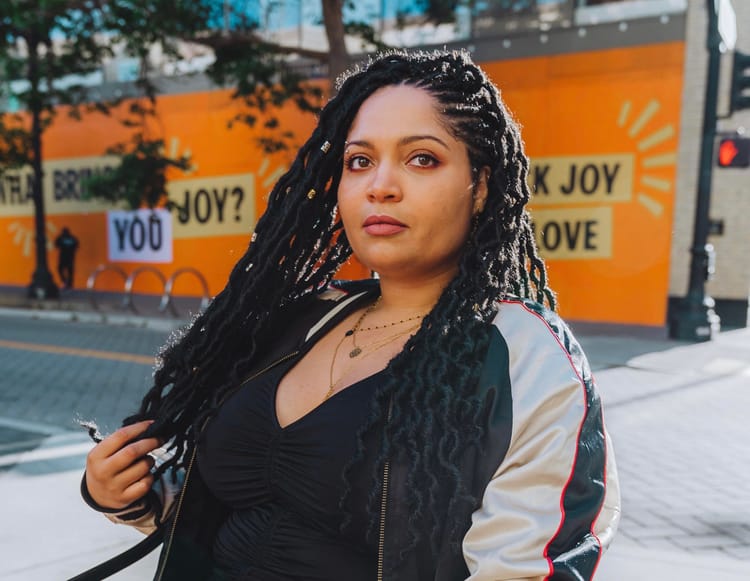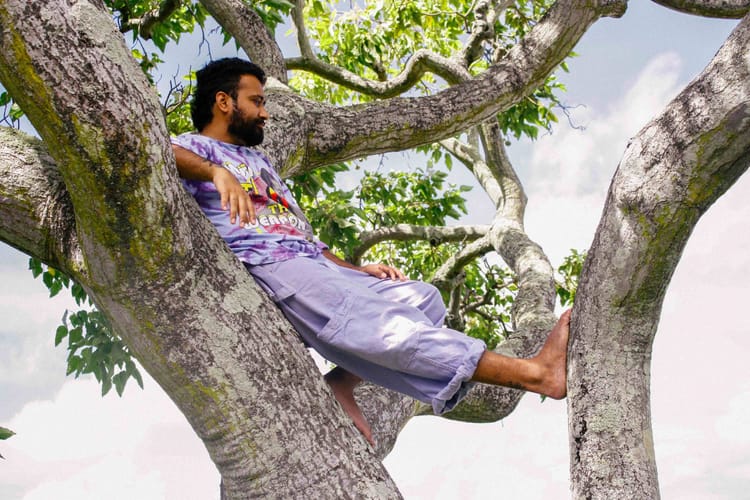Colombian heritage shapes Leo Castañeda's gaming universes
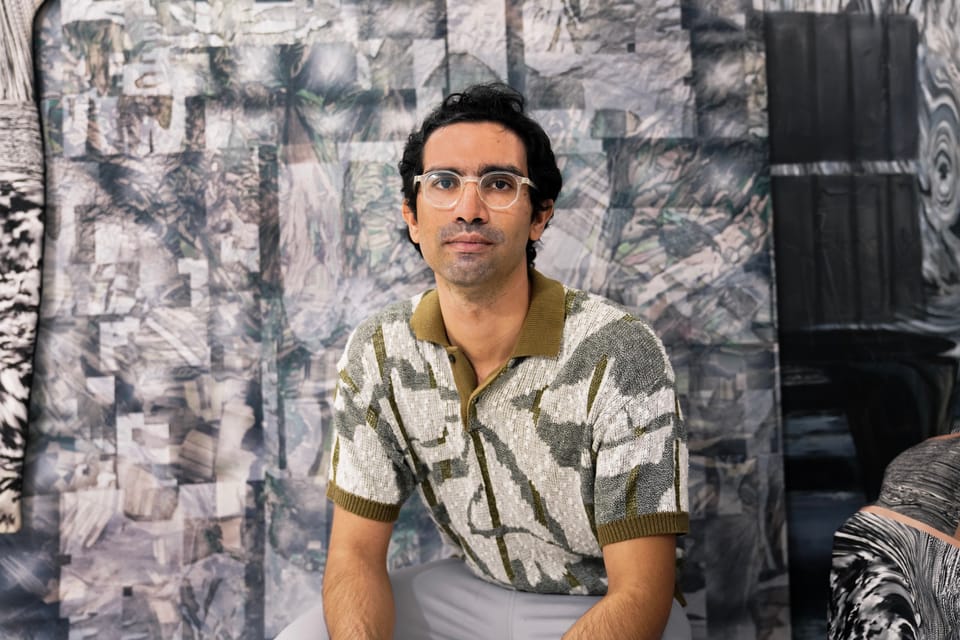
There is a standardized set of interactions in most first-person games: players walk around, jump, maybe they pick something up. Leo Castañeda is building a game that pushes past these norms; that challenges the crux of what it means to interact. In “Levels and Bosses,” a game first conceived of through a series of paintings, players will interact with their environment through a vast spectrum of actions. A player observing their environment for a long time might lead to camouflage; touching an object for a long time might lead to a violent action. “I’m thinking of the environment more of as ‘everything is part of an integrated ecosystem,’” the Miami-based artist says.
We speak with Leo about the South American artistic landscape he grew up in, the feedback loop steering his practice between physical and virtual, and how concept art is an art form in itself, one that straddles the fine art and game world.
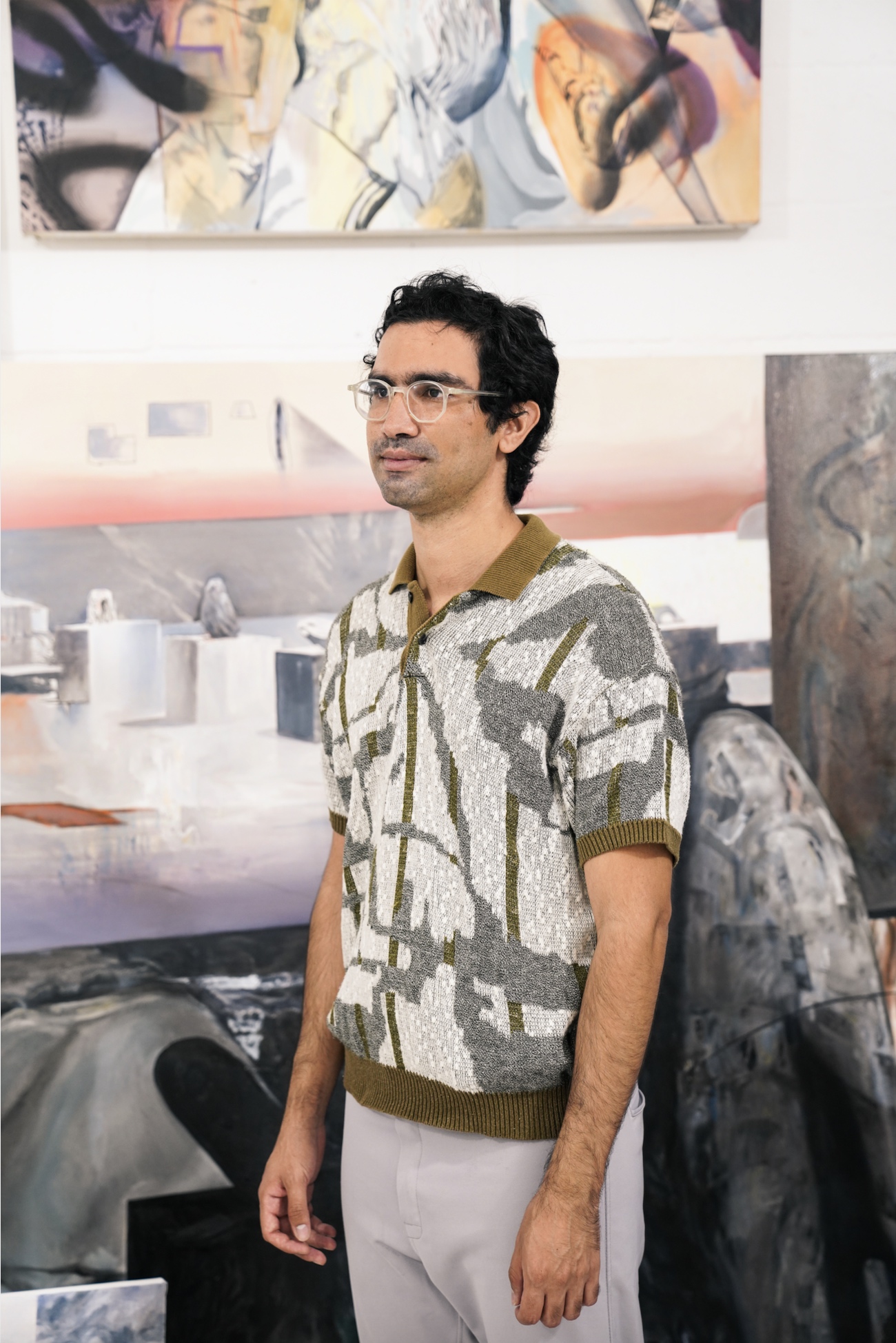


You grew up in Colombia and a multigenerational family of artists and architects. How did this upbringing push you into a creative practice?
I grew up in Cali, Colombia, a city with a pretty small art world. The landscape around my city is very mountainous, and we had areas up the mountain with a lot of fog, liminal spaces where the ground and sky would meet.
It was a lucky upbringing because I grew up around all these artists in their 60s and 70s. My parents met through architecture school, so I grew up around my parents’ architecture practices. But they both wanted to be artists. My dad’s favorite painter was Roberto Matta, a surrealist from Chile. My dad would always show me those paintings—these sci-fi space stations that were abstract. My maternal grandmother is a painter from the Brazilian Amazon and met my grandfather in Rio de Janeiro in architecture and art school. I grew up around my grandma’s painting studio. She does abstractions of the Amazon.
I started drawing when I was two. I would tell my dad, “Draw Batman,” and he would draw Batman. And then I’d say, “Draw Batman again.” And he would draw Batman again. I would tell him, “Again, and again, and again.” Then I started trying to draw Batman, and I was frustrated because I couldn’t draw as well as my dad. So he helped me. That’s when I first did doing art-based experiments… repeating characters from the media with my parents.
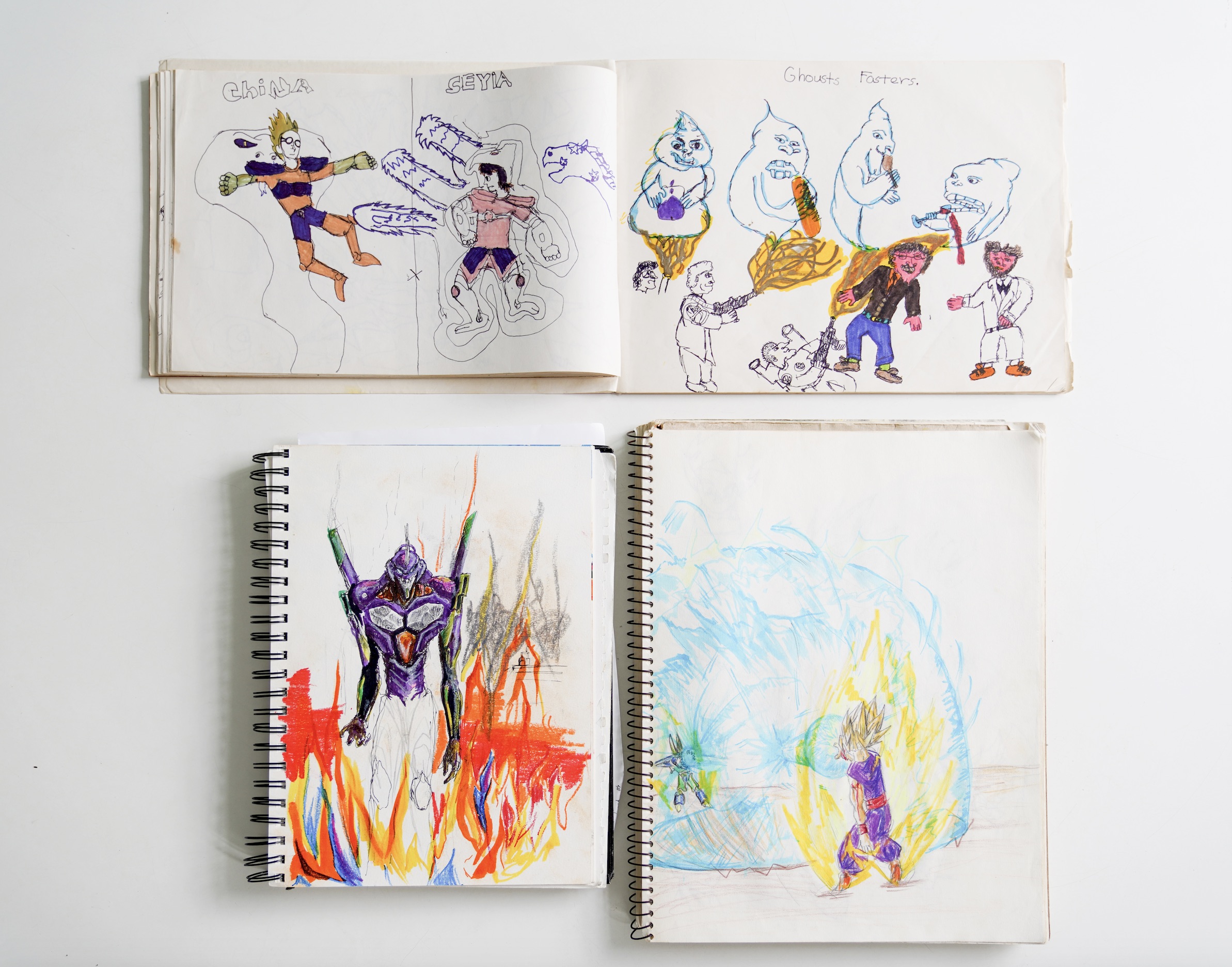
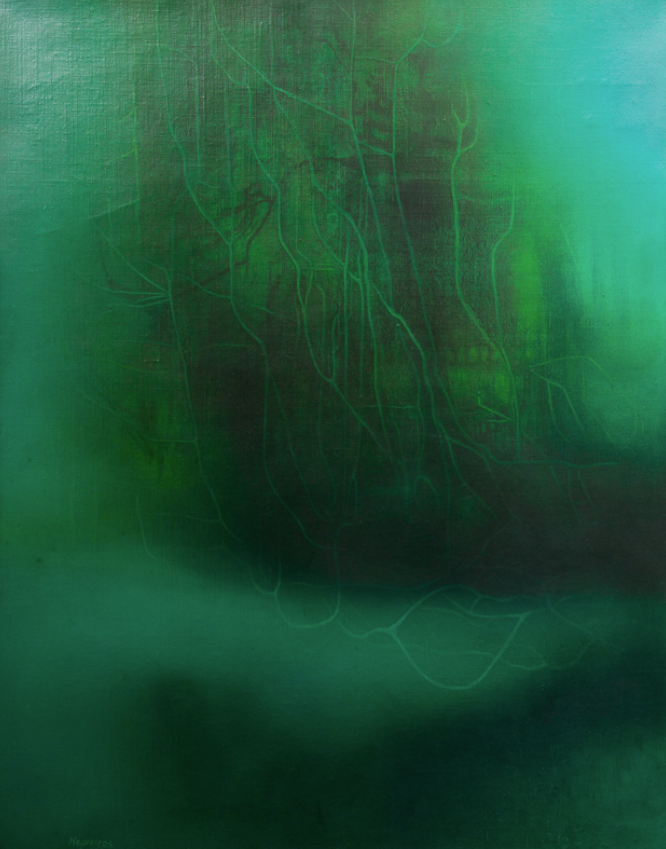
You attended the Cooper Union, an art school with a rigorous conceptual curriculum. How did the particularities of that education lead you down the path of working in game engines and art?
I credit Cooper for spurring my interest in art and video games. It was both a product of the education at Cooper and a reaction against it. I was choosing between Cooper and Art Center in California—their program for entertainment design. In high school, I loved to draw spaceships and sci fi-characters. I felt technically confident in drawing from my imagination. I lacked more on the conceptual side, so I went to Cooper to become more well-rounded. If I wanted to one day, I could go back to concept art.
Studying the framework of what art could do was pivotal, but Cooper’s conceptual foundation can sometimes be a little heavy. For some people, it can get you to the point of not liking to make art. You question every decision so much at that age, even though it’s an incredible learning experience. It happened to me.


I started the video game painting series while on exchange in Barcelona. The curriculum there was super loose and only met once a month. It allowed me to decompress what I had learned at Cooper: creating these conceptual frameworks around every medium or idea. In Barcelona, I combined that with more intuition and brought back joy into making art.
There, I thought that structure of old video games where you create worlds without justification—you’re like, Level One could be anything, Level two could be anything—could be an aesthetic itself. It’s a progression of one world to the next world to the next.
I was already a painting major at Cooper. A couple of weeks before Barcelona, I did some stereotypical video game paintings. I used old-school video games with a colored-grid-type aesthetic and turned them into paintings. I then added speakers behind it to make sounds to guide the viewer through them. I did a couple of those, but they felt like dead ends. I was trying to find a space or structure that could lead to a sense of freedom. Before I got to Barcelona, I thought, Okay, maybe the framework of these worlds was justification. I could come up with a story over time, but I had to wander first.
With the series in Barcelona, it felt like I was infusing that Cooper conceptual framework into a painting series to create a hybrid of what I would have been doing if I went to the Art Center, where I would’ve been studying entertainment design.
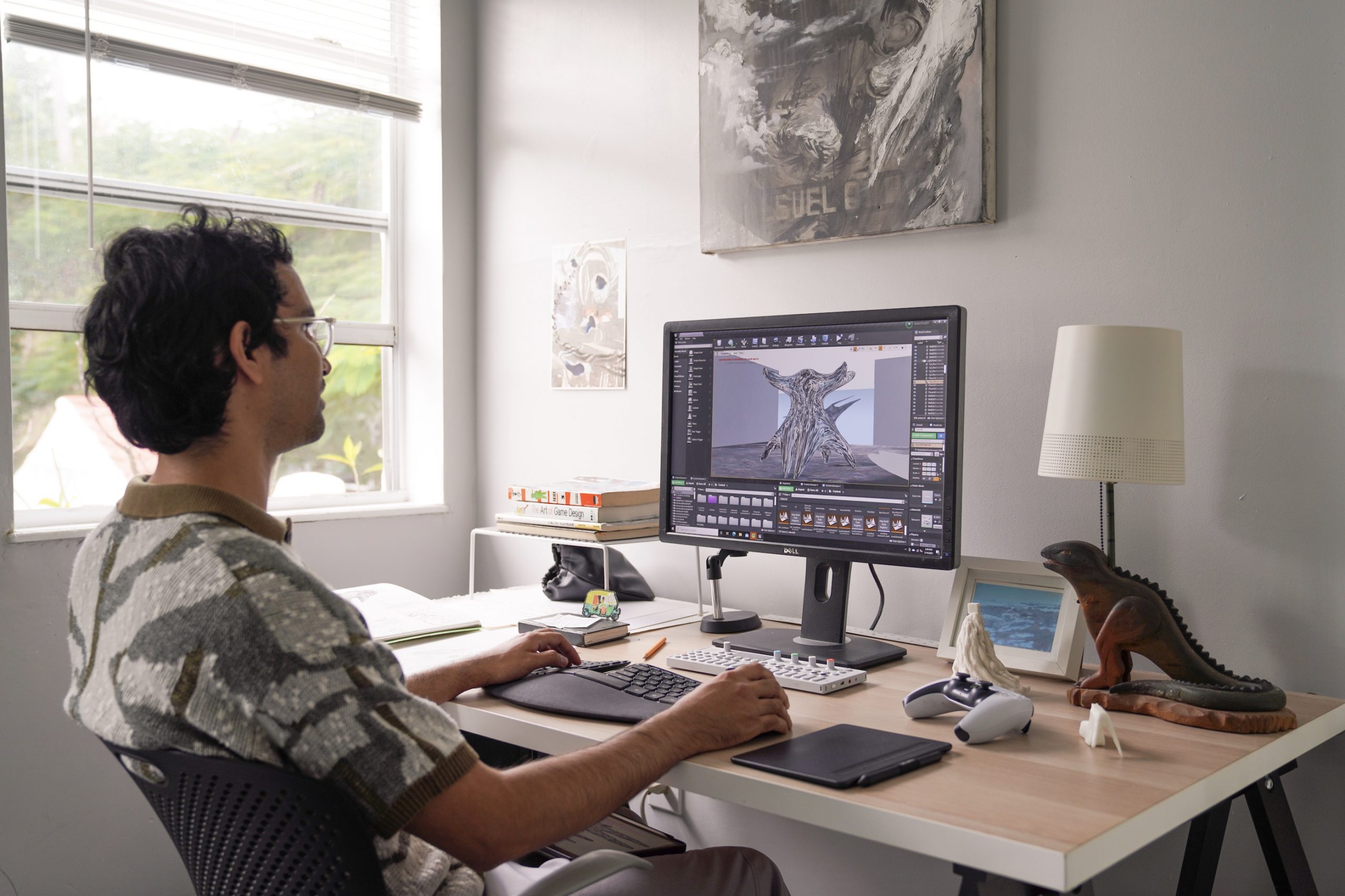

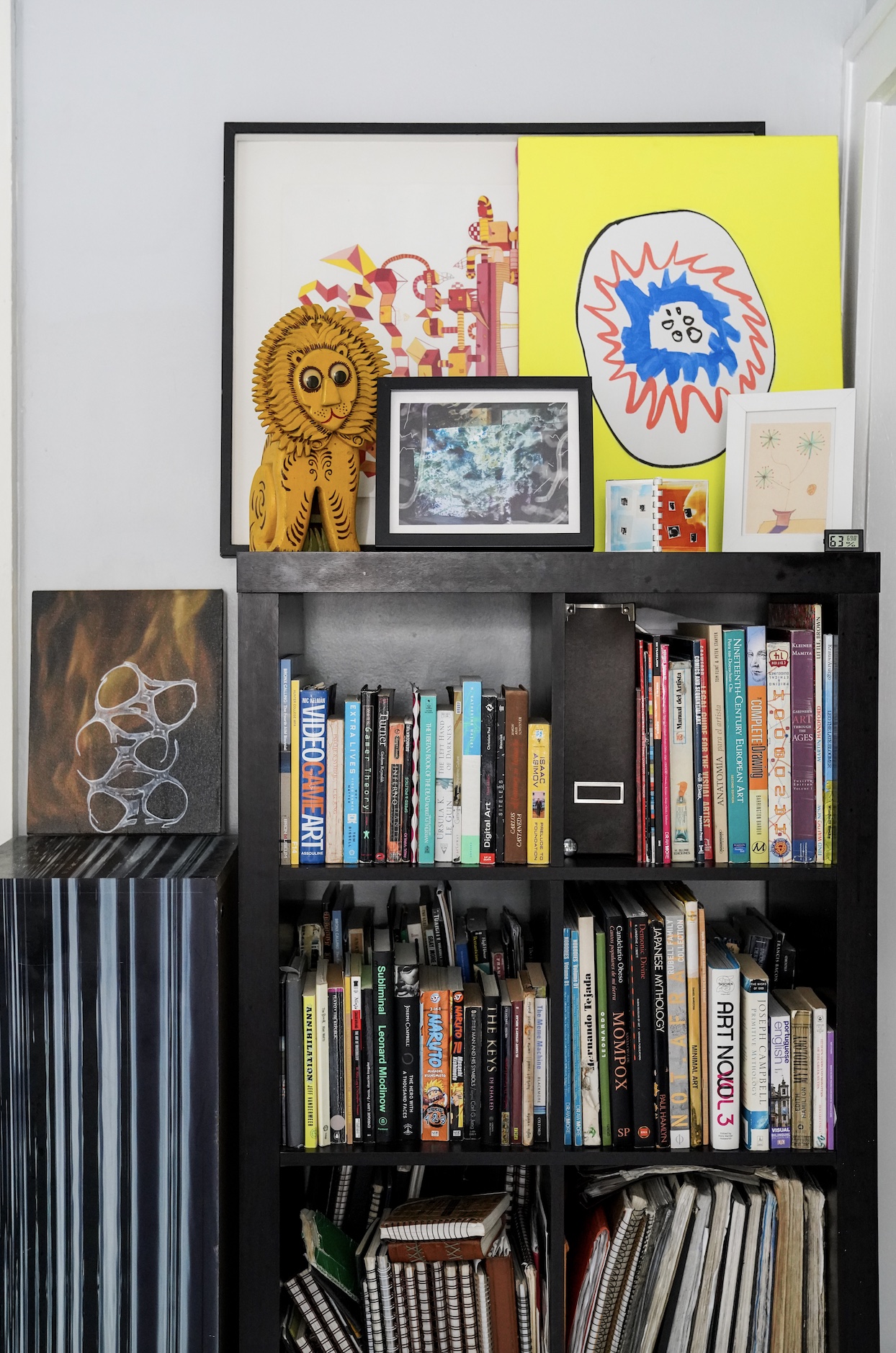
You describe your project “Levels and Bosses” as a feedback loop. It’s an ongoing work that oscillates between the physical world and the virtual game world. I’m interested in how you’re thinking about this circular relationship between the digital and the tangible. Do the paintings precede the game or vice versa?
In the project’s early phase, before I ever started working in tech, it was more linear. It was adopting the process of concept art into a painting practice. How will level one look? I worked in many painting processes, mixed with art history, video game history, and cinema history—all of this into paintings of these future virtual worlds. The limitation was that I didn’t know how to use Unreal or Unity. It was a hypothetical—like, Oh, one day “Levels and Bosses” could be a virtual space, but it’s just a painting for now.
I learned Unreal and 3D modeling on YouTube and other online resources, and the project has become more of a feedback loop. Sometimes I paint something that can turn into a virtual space or a texture. Other times, I’ll create the space inside the game engine or as a 3D model, then use it as a reference to make a painting. Currently, I consider myself to be in a position that I’m slightly confused (and excited) about painting because these realms prove painting as the catalyst for the virtual space. Then there’s the other realm, which is remaking a digital image through painting, but this tangibility almost enhances it.
There’s a further step that I haven’t yet reached, which is this hybrid approach. Interestingly enough, I’ve met some concept artists that have gone through Art Center, and it seems like concept artists within the last few years have also ended up with a hybrid approach for these 3D models to help with lighting. Then they go back in and use different textures from different parts of the internet.
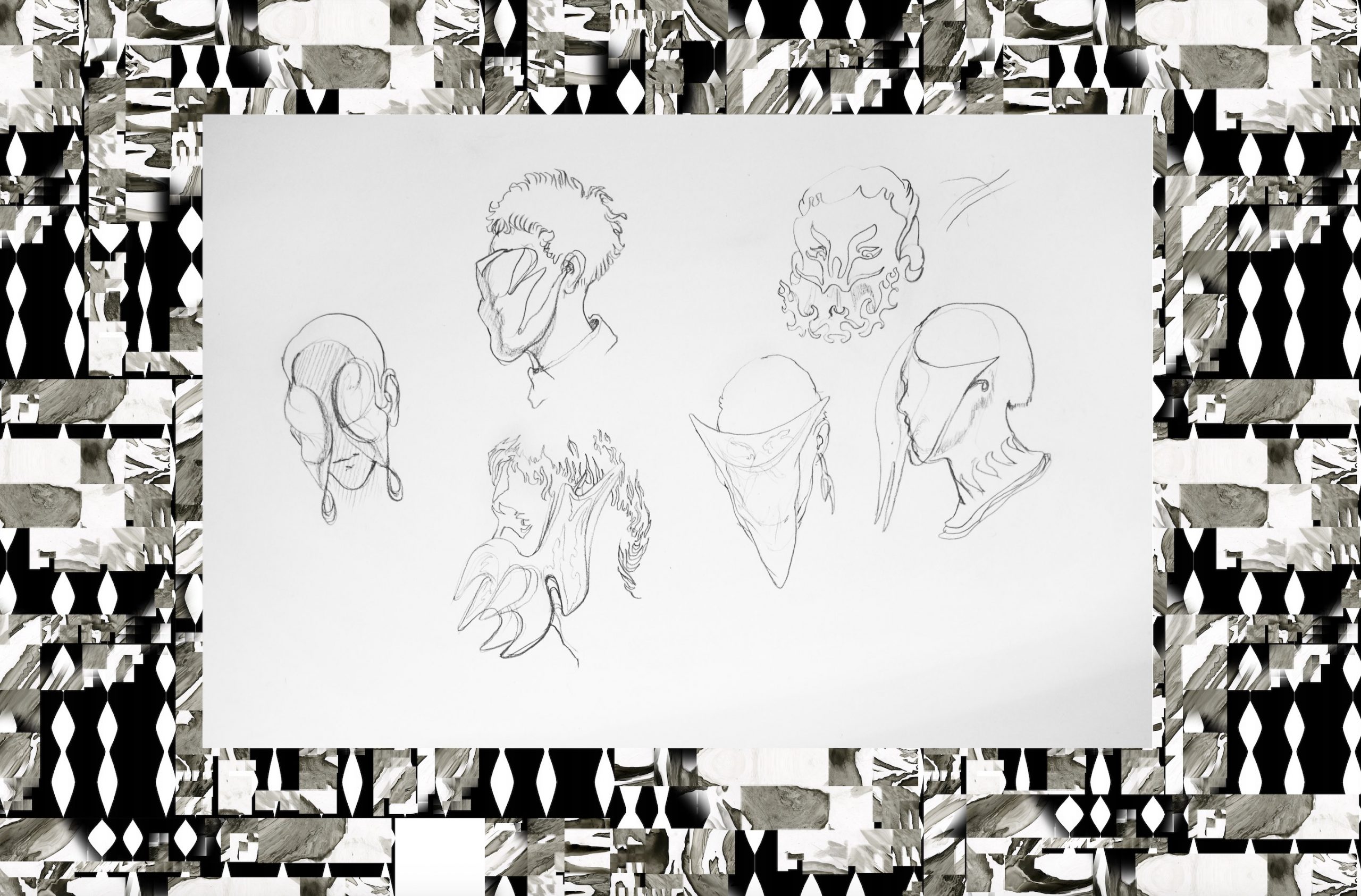
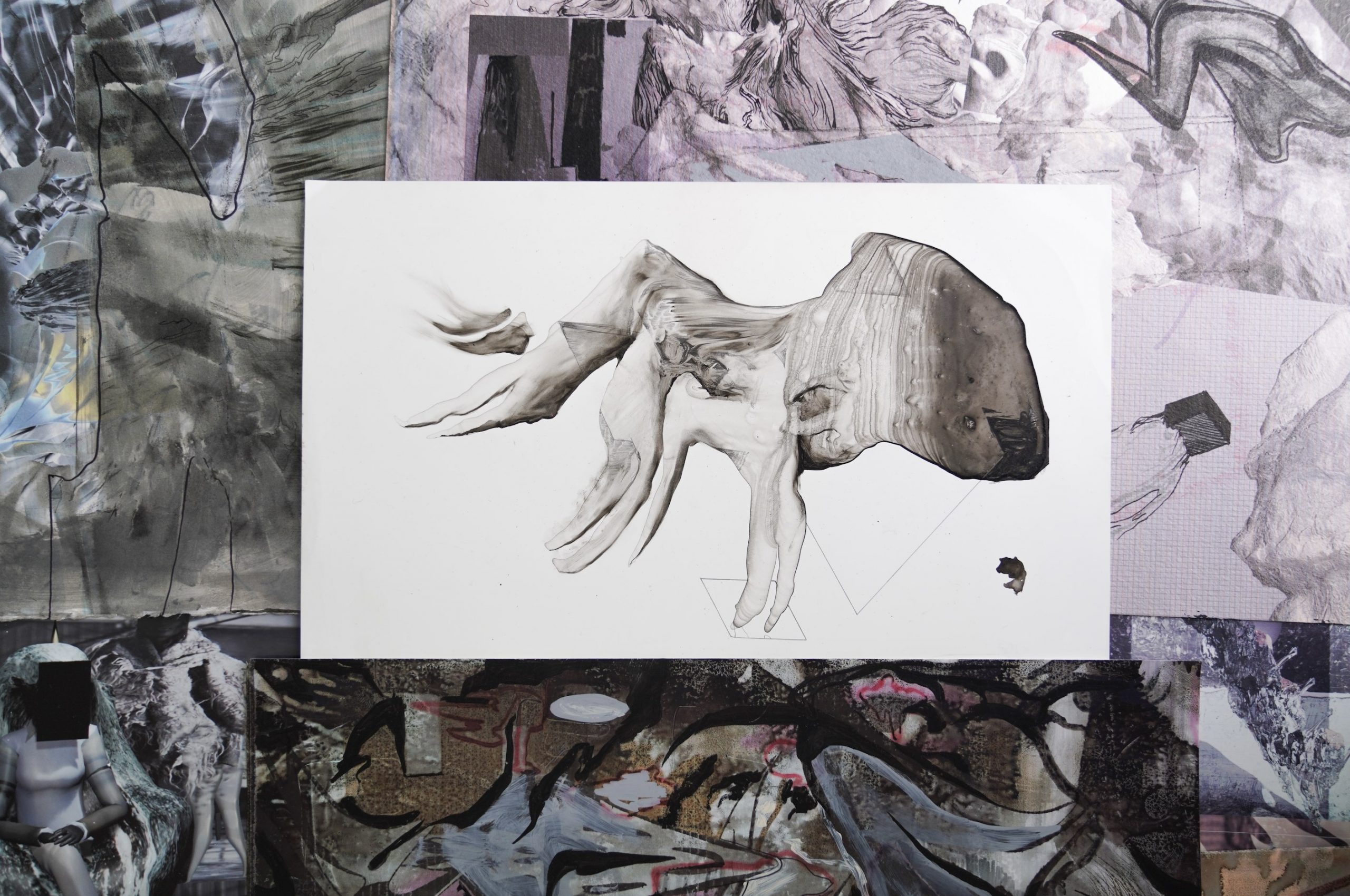
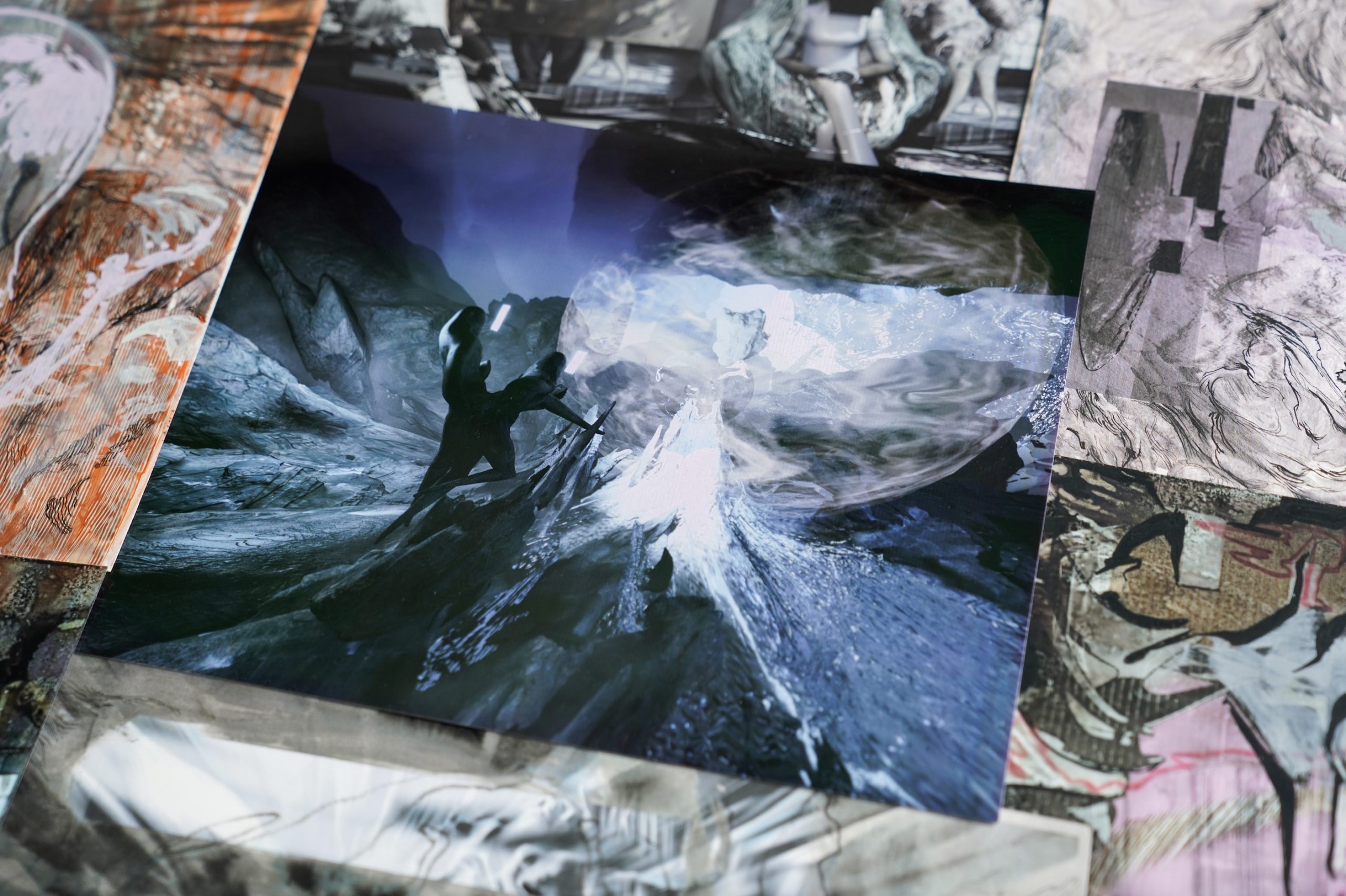
Now, you are building the game version of “Levels and Bosses” and have even formed a game studio to distribute it! What have been the most significant challenges in this process of translation?
The game will be a surrealist, AAA, sci-fi, multidimensional mythology and world. The main challenge has been to assemble a small team—as of now, in game development, it’s only a programmer and myself (Jaime Soto Kure and previously Gwen Lofman thanks to grants from Miami’s Oolite Arts and Locust Projects. I don’t have a coding background, so thanks to Unreal Engine, I’ve learned how to do Blueprints, which is a visual scripting language. Without a programmer, it would have been a lot harder for me to do this. So it’s been rewarding and challenging to be like, All right, now there are slightly fewer limitations, so how will I communicate with a programmer?
The difference between doing something by myself and having someone fully studied in computer science is so great. I want the game to be playable from a gamer’s perspective, not just be an ‘art world only’ experience. I want it to be something that can be on Steam, at the game store, or on PlayStation. It will have spectacular graphics infused with art history (and beyond western art history)—like a Trojan horse-type experience. My hope is for gamers to be like, “Ooh, the graphics are really good, let me try that.” And it ends up being more of a philosophical experience.
I asked my grandma if I could do a whole level based on her Amazonian abstractions, and she agreed. So we started working on that a year ago. I went back to Colombia, and she taught me some painting techniques, and I brought my laptop with Unreal Engine and started looking at her paintings to create a space.
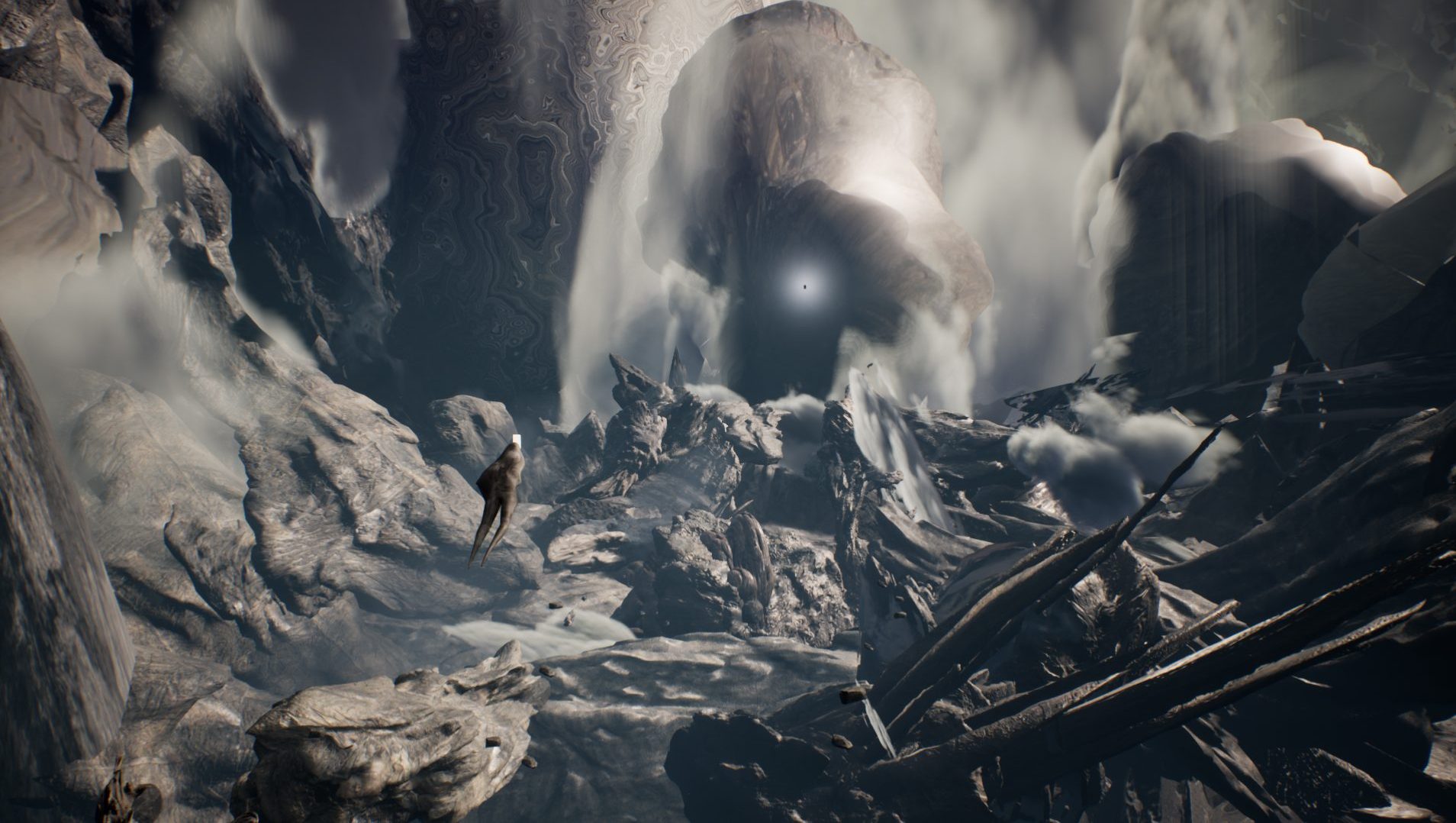
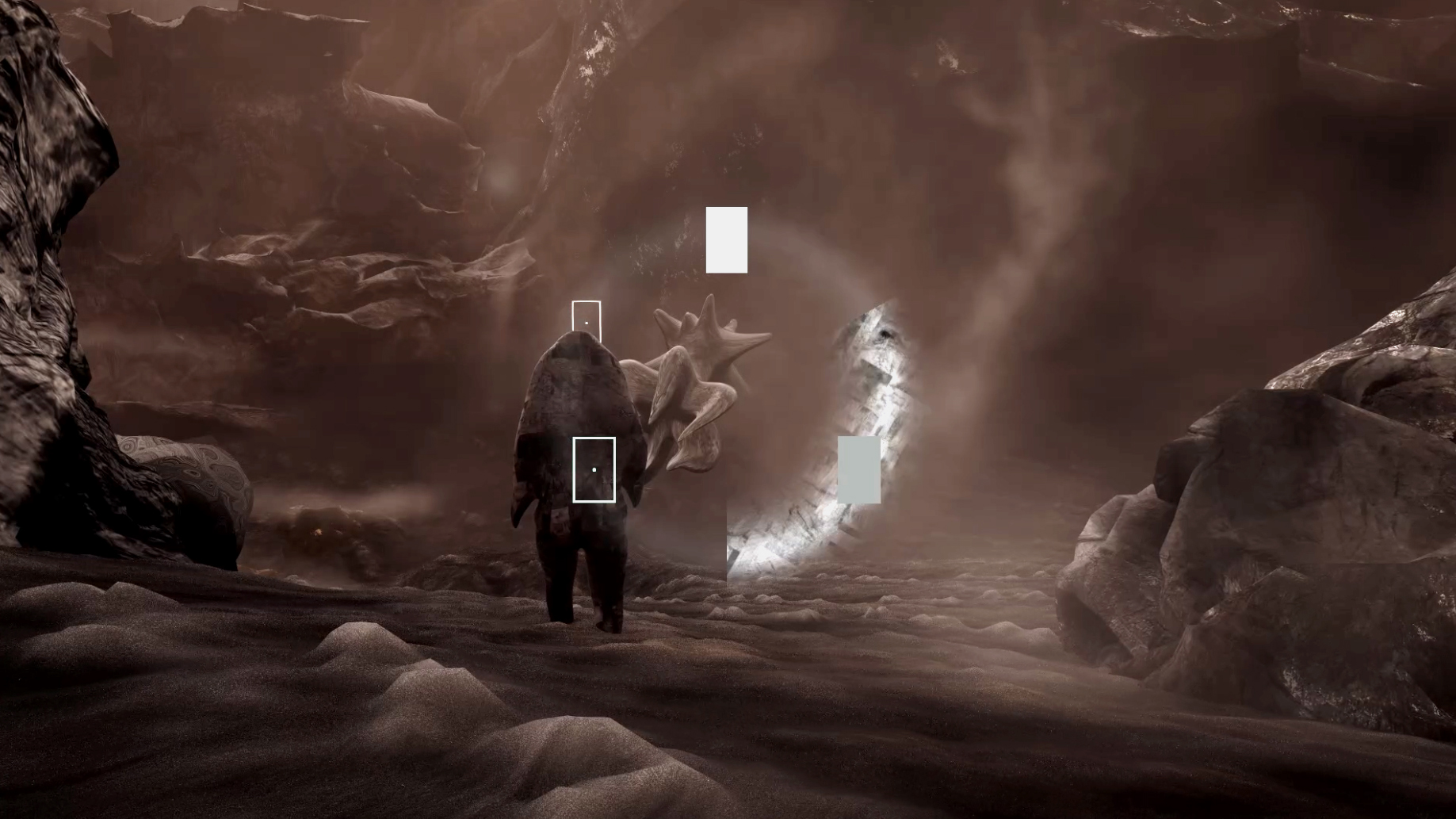
How do you think “Levels and Bosses” the game will push past ‘typical’ interactive experiences?
It’s been rewarding but challenging to come up with gameplay mechanics beyond just moving around a space. I’ve been studying many game systems and trying to figure out what the core of interaction is. So do a lot of charts of different interactions and figuring out what the essence of interaction in this game will be. It is not just a binary interaction where in many games, you press a button, and you have an on-and-off version of a button. You hit something, or you jump.
I want to work with spectrums of intensity. For example, one could touch or caress something, but then you end up inflicting violence when you intensify that touch. Another ability is observation, where you scan the environment, and when you intensely observe, you start camouflaging, so it’s almost intensifying observationally… like assimilation.
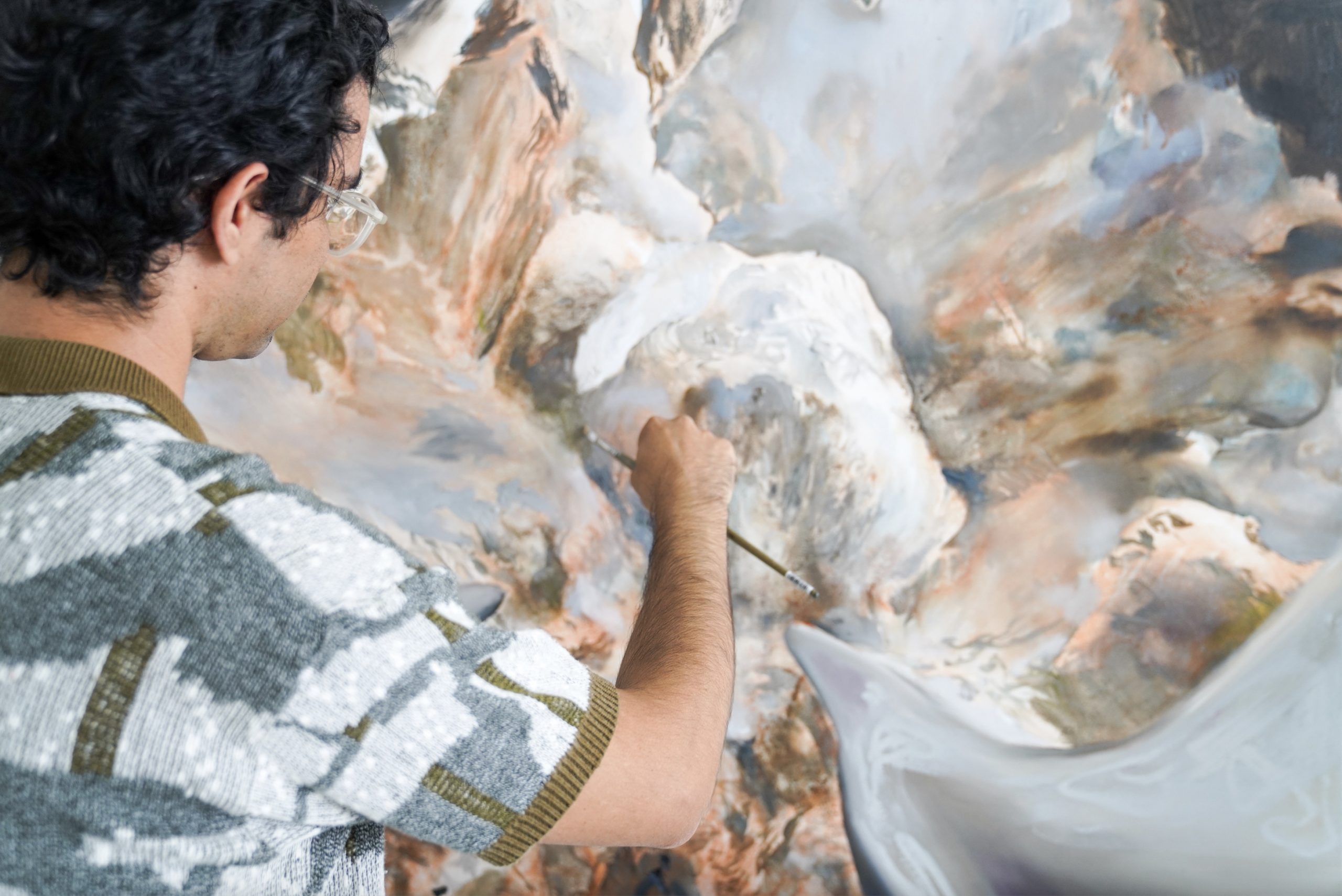

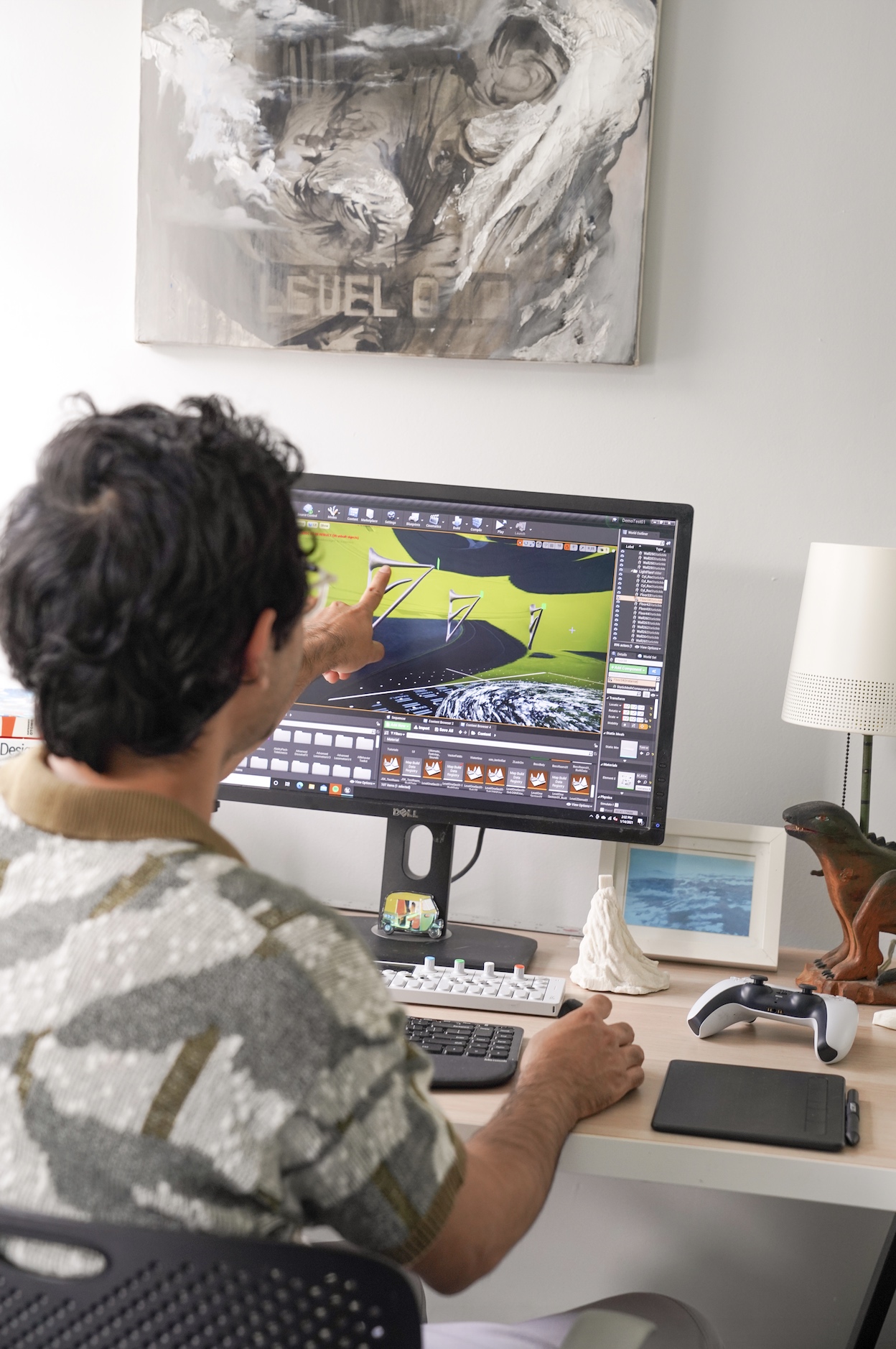
You’ve previously spoken about colonialism inherent in game structures and the contemporary art world. What are the interventions you’re hoping to make with “Levels and Bosses?”
To a certain extent, the distribution structure in gaming is more democratic than that in fine art. In art, you have objects that are bound by scarcity. Scarcity leads to high value, which then leads to the one percent only having access to ownership…ownership and economic support rely on this limited structure.
Video games have that inherent infinite reproduction, and they don’t lose value by having thousands of copies out there. Infinite reproduction and has a lot more potential for impact. I was teaching at a public university in Miami, and many students didn’t have access to go to art museums and galleries. Maybe they lived in the suburbs, so video games and anime were key sources of artistic inspiration. To me, it’s rewarding to potentially tap into this distribution channel as a way for it not to be this elitist circle of ‘art for art’s sake.’
The colonization of capitalistic structures within game design are related to new interaction types. I want to re-think game design as a space for open-ended discovery of new interaction types through iteration on an intention. The intention being to reward or promote interactions, create sustainability and mutualism while having them within a spectrum that can also lead to destruction, domination, or extraction. I’m not creating a game design structure that completely denies the player of having these pervasive structures of capitalism and colonialism of taking things, where you go around a landscape, and you collect or mine. Then you claim, absorb, and defeat. Not necessarily taking that away, but making it more awkward. Maybe it’s not the most efficient way to move around the space, thus rewarding and promoting a more sustainable, mutualistic experience with the landscape, like other entities, bosses, etc.
I want to think of spaces and interactions where the self, others, and landscape are interchangeable—where the player-character and world design principles resemble the plants, vehicles, animals, and technology; they’re all kind of mutable entities. Throughout the game, the landscape is often a sentient character, such as Level One where liquids, solids and gasses morph into each other depending on the intensity of player interaction. Many Indigenous mythologies throughout the Americas conceive of environments and objects as sentient, so they are revered as equally important to humans instead of playing fields for endless consumption and growth. New mythologies and worldbuilding in games can learn from this.

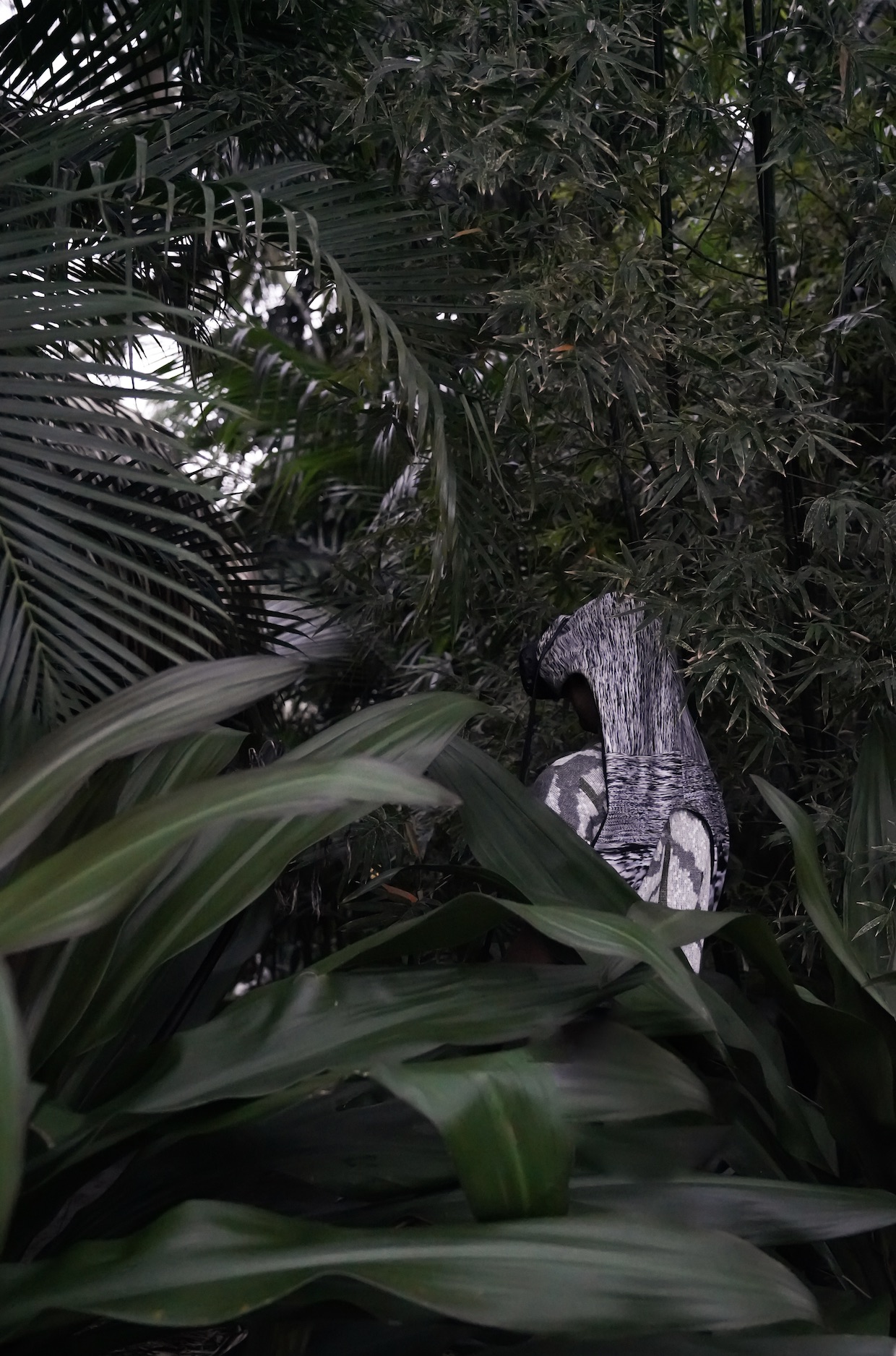

You have an upcoming show at Tile Blush in Miami. You speak about distributing “Levels and Bosses” more traditionally as a game, so it’s notable that you’ll show the project in a gallery context here.
Tile Bush approached me for my paintings first then asked to include a video of the game spaces along with them. Right now, I’m working on a demo for Levels and Bosses—a vertical slice of the game featuring a variety of worlds to apply for grants. The paintings, images, and videos in the upcoming show highlight the spectrum of interactions and environments in the Levels & Bosses universe. The paintings are a bit diagrammatic, but they also show images of these different demo training rooms. The traditional gallery framework is a good space to have a ‘preview type’ scenario—later in the year, I’ll put the interactive demo out online, so it’s free to access.
Tile Blush also specializes in object design, and I’m excited about collaborating with them. With past wearable and interactive VR sculptures, my sister who studied fashion design has helped me actualize many of the sculptures’ fabric forms. I’m good at Legos, but with real materials, for some reason, I’m pretty clumsy. Since Tile Blush has its fabrication shop, it will be cool to see what new objects will come to be—like high-end design meets gamer gear. Also, using symbols and structures from within the video game to influence these objects.
As much as I’m interested in the endless distribution of video games, I am fascinated by this hybrid approach of using art institutions or even tech conferences as spaces to do installations. I’m interested in using this installation as a space to combine tech-booth aesthetics and sculptures into one and create a hybrid of sculptural controllers, sculptural seats, and even a sculptural game-playing environment.


You teach game design at the high school level. How has your teaching practice shaped your creative process? Do you see these ideas you speak of about the power of games reflected in the work that your students are making?
I see that as a feedback loop, too. The open-ended narrative structure of games has influenced how I teach the classes and what I’ve learned from teaching. Instead of having an innate aesthetic preference, having an open structure helps me convey that their ideas are all valid. Then, building to create more connections or figuring out what turns something into art is such a subjective spectrum. That’s been key: thinking about the meaning of game structures and creating more complex things that are not just surface-level.
I tried to have open-ended assignments where students can work with 3D modeling or creation, have drawing elements, or rethink how objects are textured. So, it’s not just texturing something to look real, but using the texturing as a conceptual layer potentially. Overall, I want it to be a space to have fun and create out of joy.



What do you see as the political power of games?
It can be both a critique and an imagining of an alternate future. Game interfaces are arbitrary, often just a collection of barcodes makes the difference between a video game and a scanning device at the supermarket. To an extent, games are like a bunch of switches. So the conceptual structure, visual expression, and interaction range of what those switches become can be a critique or a way of creating a new world. You can choose to have a colonial interaction model embedded into a game, or you can also explore possibilities of interdependent play.
Growing up in the political and social contexts of both Colombia and the US I’ve also been thinking about how the inventory of games can have economic implications. For Levels and Bosses, a scanning system assimilates with the landscape, but I’ve had the thought of, Can I scan infinite sets of landscapes and have infinite storage of these pictures, or is there a limit? If one has an infinite ability to collect items, that means something. All those decisions create value structures that can form the basis of a world—from being a hunter-gatherer, nomadic society to an endless consumer, hyper-mansion-type society, and myriad resource management possibilities we’re still learning to imagine.
I’m sure gameplay will be more and more influenced by artificial intelligence….worlds where you have AI also creating parts of interaction systems, or part of the worlds themselves. Games simulate political and economic values, especially revealing how we relate within the worlds that we design. And they can be iterated and re-iterated forever.
Credits
Edited for length and clarity. Interview conducted in January 2021. Photography by Vanessa Diaz.

